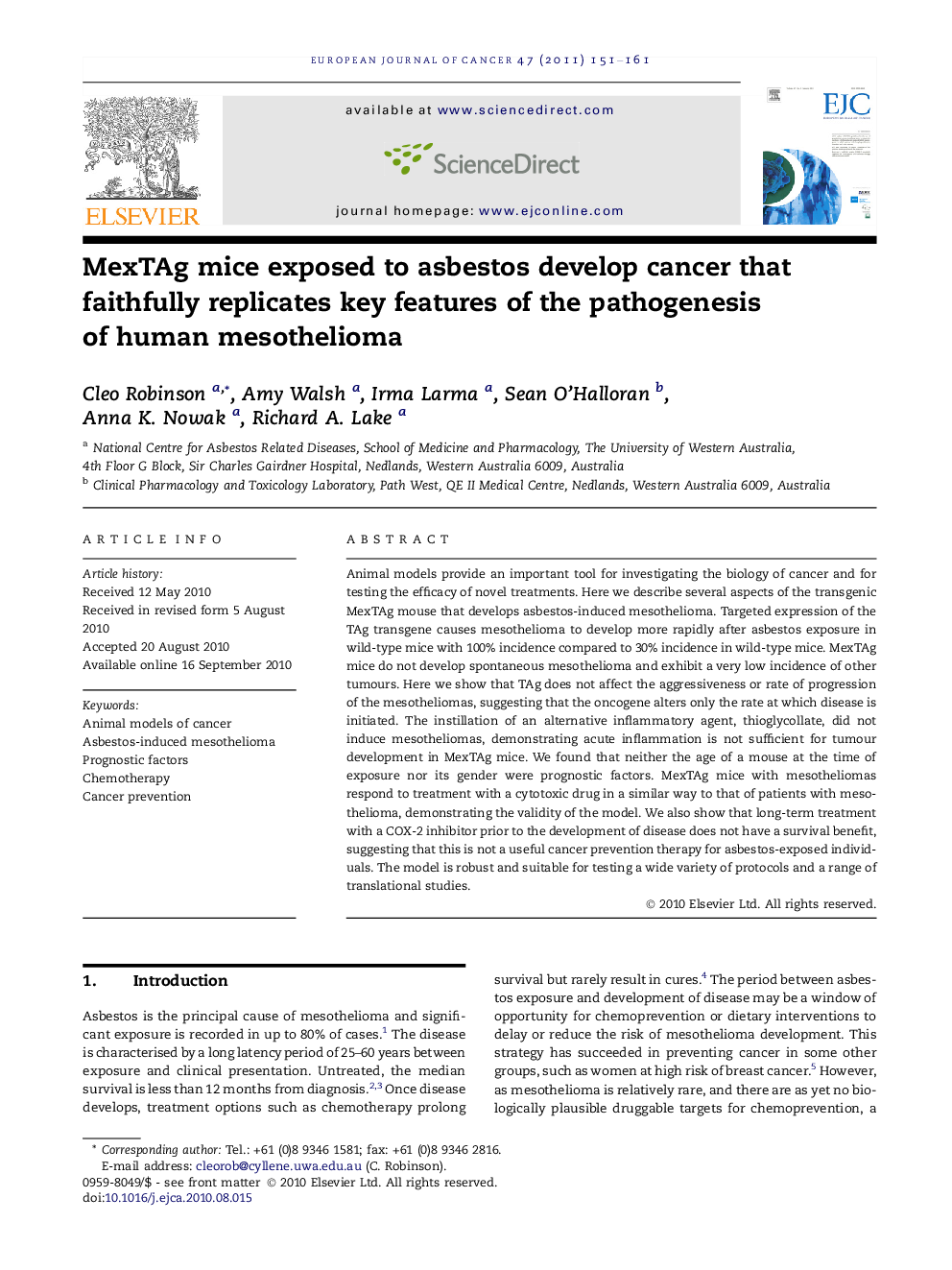| کد مقاله | کد نشریه | سال انتشار | مقاله انگلیسی | نسخه تمام متن |
|---|---|---|---|---|
| 2124559 | 1547197 | 2011 | 11 صفحه PDF | دانلود رایگان |

Animal models provide an important tool for investigating the biology of cancer and for testing the efficacy of novel treatments. Here we describe several aspects of the transgenic MexTAg mouse that develops asbestos-induced mesothelioma. Targeted expression of the TAg transgene causes mesothelioma to develop more rapidly after asbestos exposure in wild-type mice with 100% incidence compared to 30% incidence in wild-type mice. MexTAg mice do not develop spontaneous mesothelioma and exhibit a very low incidence of other tumours. Here we show that TAg does not affect the aggressiveness or rate of progression of the mesotheliomas, suggesting that the oncogene alters only the rate at which disease is initiated. The instillation of an alternative inflammatory agent, thioglycollate, did not induce mesotheliomas, demonstrating acute inflammation is not sufficient for tumour development in MexTAg mice. We found that neither the age of a mouse at the time of exposure nor its gender were prognostic factors. MexTAg mice with mesotheliomas respond to treatment with a cytotoxic drug in a similar way to that of patients with mesothelioma, demonstrating the validity of the model. We also show that long-term treatment with a COX-2 inhibitor prior to the development of disease does not have a survival benefit, suggesting that this is not a useful cancer prevention therapy for asbestos-exposed individuals. The model is robust and suitable for testing a wide variety of protocols and a range of translational studies.
Journal: European Journal of Cancer - Volume 47, Issue 1, January 2011, Pages 151–161